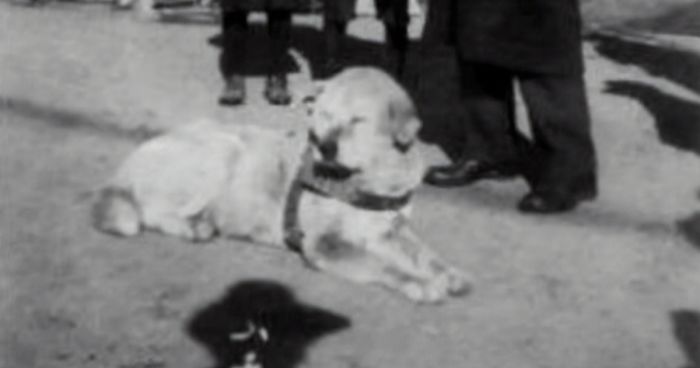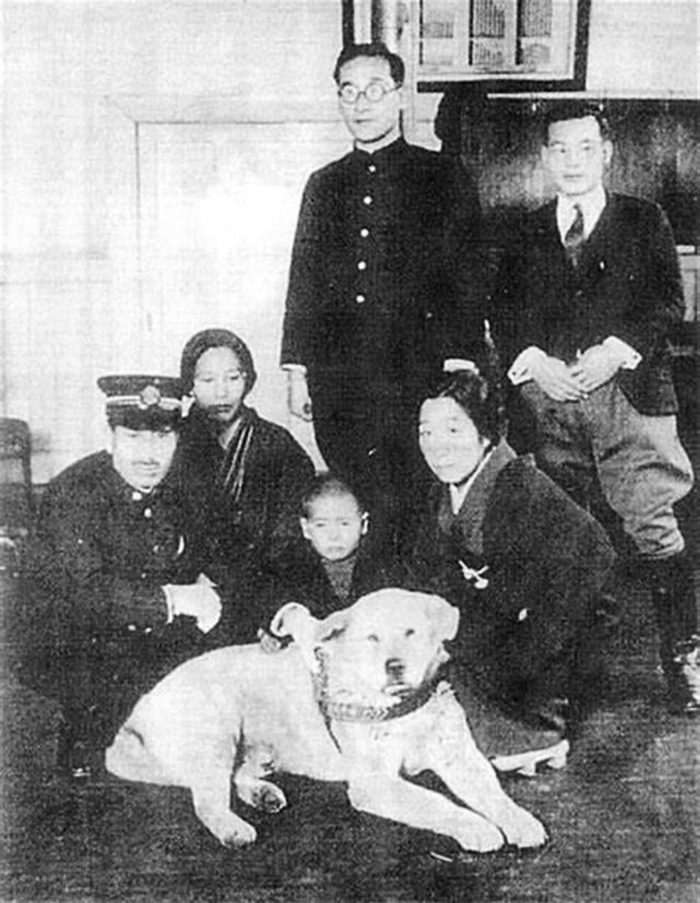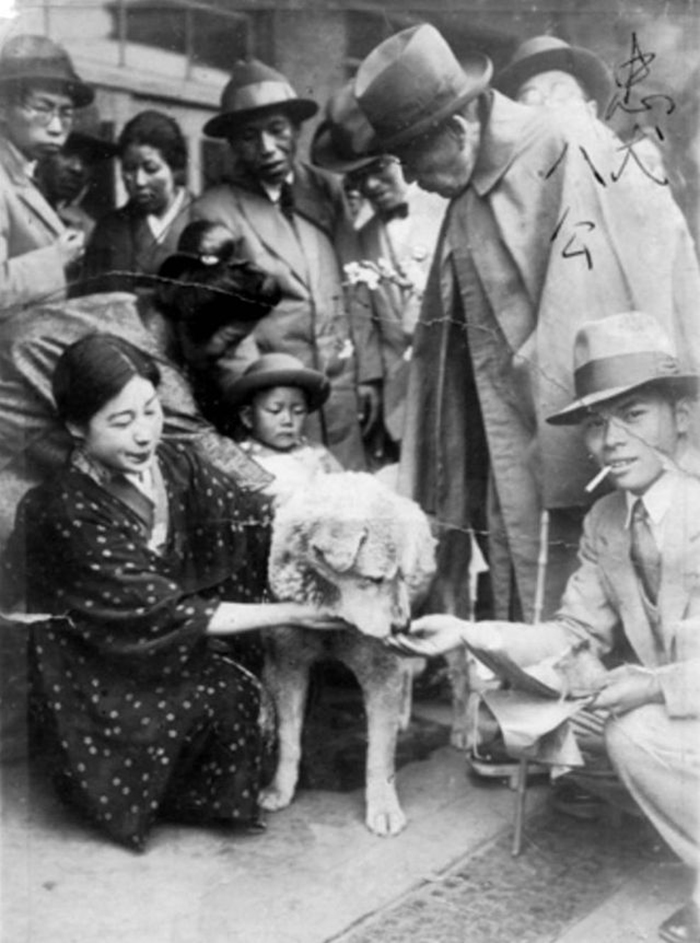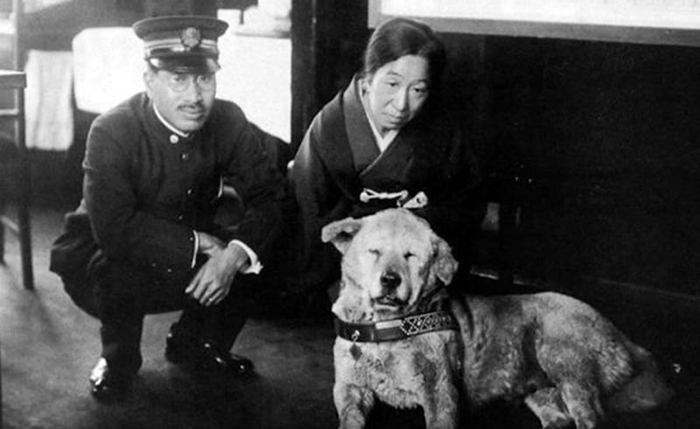
Rare Photos Of Hachiko Patiently Waiting For His Owner Have Surfaced And It’s Heartbreaking To See
Hachikō is a dog that probably needs no introduction. A symbol of loyalty and neverending love, Hachikō went on to become a cultural phenomenon, an icon not only in his native Japan but to the whole wide world as well. The golden-brown, pure-bred Akita was born back in the late fall of 1923 on a farm in Ōdate, Akita Prefecture, Japan. A year later, Hachikō was adopted by a professor, Hidesaburō Ueno, who took him in to live in Shibuya, Tokyo. Hidesaburō Ueno was a professor in the agriculture department at Tokyo Imperial University. The man would take the train to his work only to be greeted by his loyal dog on his way back. At the end of each day, the smart dog would leave the house to wait for his owner at Shibuya Station. Then, sadly, on May 21, 1925, Hidesaburō Ueno did not return. He had suffered a cerebral hemorrhage while giving a lecture and died without ever returning to the train station where Hachikō waited for him. And now, we can finally share some rare photos on the beloved Akita with you.
Hachikō’s name is known by people from all around the world
Image credits: unknown
He went down in history as the most loyal pet
Image credits: unknown
This went on for the next nine years, nine months, and fifteen days—Hachikō would patiently wait for his owner at the same train station every day. Each day, at the same time, that Hidesaburō Ueno’s train was due at the station.
After his owner’s death in 1925, Hachikō would still wait for him every day at the train station
Image credits: unknown
Hachikō would go there every day at the same time that his owner would have come back after work
Image credits: unknown
Naturally, the commuters quickly took notice of the adorable dog. Many of them had seen the loyal furry friend and his owner Hidesaburō walk home together from said station. Not everybody was friendly, at least not until October 4, 1932, when the first article on Hachikō was published—after that, Hachikō gained national attention, and people would often bring the famous dog food and treats. You can see the loyal Akita immortalized in the vintage photos from several publications of the time.
This went on for nearly a decade
Image credits: unknown
In 1932, the first article was published about the loyal pet in a national newspaper
Image credits: unknown
The article was written by one of Hidesaburō Ueno’s former students. The student was writing a thesis on the Akita breed of dogs and upon seeing one of such at the station, he followed Hachikō home—to Kuzaboro Kobayashi, the former gardener of the late professor. The student learned the life story of Hachikō from Kuzaboro and shortly thereafter published a documented census of Akitas in Japan. According to the research, only 30 purebred Akitas remained living in Japan, one of whom was Hachikō from Shibuya Station.
After that, Hachikō became known nationwide
Image credits: unknown
People would come to Shibuya Station to pet Hachikō and bring him treats
Image credits: unknown
The story goes that the former student visited Hachikō frequently and, over the course of years, published several articles on the dog and his remarkable loyalty. Soon enough, Hachikō became a nationwide sensation. The Japanese were deeply impressed and touched by Hachikō’s everlasting love and loyalty. Across the country, Hachikō became the prime example of family loyalty, as taught by teachers and parents to kids.
The ever-loving dog was used as an example of loyalty for children
Image credits: unknown
Hachikō became a national treasure
Image credits: unknown
In 1934, the devoted Akita Hachikō was immortalized in the form of a bronze statue sculpted by noted Japanese artist Teru Ando. Sadly, during World War II, it was used up for metal. However, in 1948, due to the efforts of the sculptor’s son, a second statue of the loyal Akita emerged and still remains standing. Today, the entrance to the station next to the statue is named “Hachikō-guchi,” which translates roughly as “The Hachikō Entrance/Exit.”
In 1934, a bronze statue for Hachikō was built
Image credits: unknown
Sadly, a year later, the good boy died
Image credits: unknown
After waiting for his owner’s return for a decade, Hachikō died on March 8, 1935. At the time, the loving dog was 11 years old. Only in 2011 were scientists able to finally determine the cause of Hachikō’s death—apparently, the good boy had terminal cancer and a filaria infection.
He was 11 years old at the time
Image credits: unknown
He was buried next to his owner
Image credits: unknown
After the death of Hachikō, his remains were cremated and his ashes buried in Aoyama Cemetery, Minato, Tokyo. The loyal friend was placed next to the grave of his beloved owner Professor Ueno. The good boy’s fur was preserved and stuffed to appear on permanent display at the National Science Museum of Japan in Ueno, Tokyo.
His fur was stuffed to appear on permanent display at the National Science Museum of Japan
Image credits: unknown
37Kviews
Share on FacebookThey stuffed his fur and they buried him next to his owner... Soo... they skinned him and then buried him?
I'm not a crier... but that movie hit me so hard that I couldn't stop crying when Richard Gere had that heart attack... I just knew that beautiful dog was gonna wait every day and I was like NO... OMFG... MY HEART! I was bawling.
Load More Replies...This is so heartbreaking. It just goes to show how loyal a dog can be. 😭 ❤🐕
Correct it was even during WW2 one of the worst wars even
Load More Replies...They stuffed his fur and they buried him next to his owner... Soo... they skinned him and then buried him?
I'm not a crier... but that movie hit me so hard that I couldn't stop crying when Richard Gere had that heart attack... I just knew that beautiful dog was gonna wait every day and I was like NO... OMFG... MY HEART! I was bawling.
Load More Replies...This is so heartbreaking. It just goes to show how loyal a dog can be. 😭 ❤🐕
Correct it was even during WW2 one of the worst wars even
Load More Replies...
 Dark Mode
Dark Mode 

 No fees, cancel anytime
No fees, cancel anytime 
































































152
34